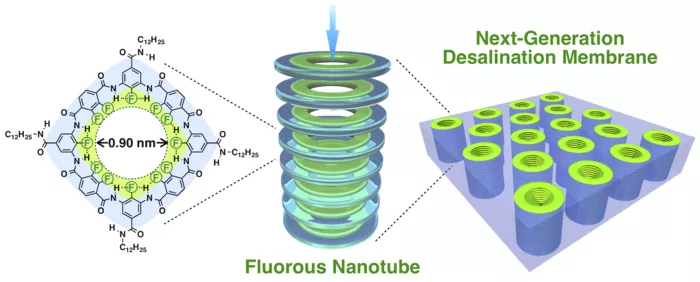All parts of the world are facing an increasingly severe shortage of water resources. Desalination is a method of producing drinking water, but it is often accompanied by huge energy costs. According to a paper published in the journal Science on the 12th, Japanese researchers successfully filtered salt in water using fluorine based nanostructures for the first time** Compared with the current main seawater desalination methods (thermal energy method and reverse osmosis membrane method), fluorine ion nano channel works faster, requires less pressure and energy, and is a more effective filter.

If you cook in a pot with Teflon coating, the cooked rice will not stick to the pot. This is because the key component of polytetrafluoroethylene is fluorine, a natural hydrophobic or hydrophobic light element. Teflon can also be used for pipe lining to improve water flow.
Yomin ITO, an associate professor in the Department of chemistry and biotechnology at the University of Tokyo, and his team tried to explore how pipes or channels made of fluorine operate on a nano scale to test their effect on selective filtration of different compounds, especially water and salt.
The team created a test membrane by chemically synthesizing nano fluorine rings, which are stacked and embedded in other impermeable lipid layers, similar to the organic molecules that make up the cell wall. They created several fluorine ring test samples with a width of about 1 to 2 nanometers, while human hair is almost 100000 nanometers wide. To test the effectiveness of the membrane, the research team measured the presence of chloride ions on both sides of the test membrane.
"The smaller channels in the test completely reject the introduction of salt molecules, while the larger channels are improved compared with other desalination technologies and even cutting-edge carbon nanotube filters." "What really surprises me is that this process happens very fast, thousands of times faster than typical industrial equipment and about 2400 times faster than experimental desalination equipment based on carbon nanotubes," ITO said
Fluorine is electronegative. It repels negative ions, such as chlorine in salt. The advantage of this is the decomposition of essentially loosely bound water molecular groups (water clusters), so they can pass through the channel faster. The team's fluorine-based water desalination membrane is more effective, faster, requires less energy to operate, and is very easy to use.
In the future, the research team hopes to improve the way of synthetic materials, improve the service life of the membrane and reduce the operating cost.